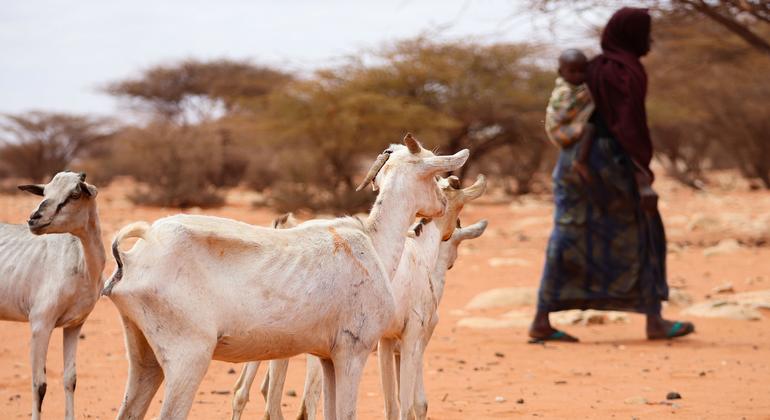Thousands of severely malnourished children are at risk of dying in Somalia, the United Nations Children’s Fund warned on Tuesday, urging donors to increase their support amid a historic drought.
“Without further action and investment, we are facing child deaths on a scale not seen in half a century,” said a spokesman for UNICEF James Elder to reporters in Geneva, who explained that “every minute of every day, a child is admitted to a health center to be treated for severe acute malnutrition.”
The latest figures reveal that some 44,000 malnourished children due to lack of food have been admitted to hospitals since August.
“Severely malnourished children are up to 11 times more likely
chances of dying from diarrhea and measles than well-nourished children. With rates like these, Somalia is on the brink of a tragedy on a scale not seen in decades,” Elder said.
UN agencies have been warning for months of impending famine in the Horn of Africa, where the worst drought in 40 years is affecting more than 20 million people in several countries.
in Somali, a famine is expected in Baidoa and Burhakaba districts in the Bay region between this month and Decemberif aid does not reach those most in need, the UN Office for the Coordination of Humanitarian Affairs reported on Tuesday (OCHA).
The worst is yet to come
“When discussing the crisis facing Somalia today, it is common for dire comparisons to be made to the famine of 2011, when 260,000 people died. Yet everything I am hearing on the ground, from specialists in nutrition to the herders in the region, is that things really look worse today,” Elder said.
“In 2011, after three below-normal rainy seasons, the affected population was half what it is now, and general conditions, rain and harvest, were on the mend. Now, there have been four seasons with scarce rains; the forecast for the fifth is looking pretty grim, with the affected population double the size of 2011. Things are bad and all signs are going to get worse.”
The UNICEF spokesman gave the crisis a human face, specifically that of a child “whose life hangs in the balance.”
find and treat
Although thousands of these children have made it to treatment centers, carried by mothers who have walked for days, Elder fears for those who cannot reach help, especially in a country where access to healthcare is continually hampered by terrorism and threats to humanitarian workers.
The spokesperson described how UNICEF is deploying mobile teams to “find and treat” malnourished children, even in hard-to-reach places.
Staff have treated more than 300,000 children for severe acute malnutrition so far this year, while emergency water transport has reached 500,000 people in the last three months.
“However, funding problems persist,” he said.
Although UNICEF has received “substantial funding” in recent months from the US, UK and the European Commission, Elder stressed that long-term funding will be critical.”to prevent famine from happening again and again“.

humanitarian appeal
In this sense, the UN humanitarian team in Somalia has revised its appeal for 2022, raising it from 1.46 billion dollars to 2.26 billion dollars, which represents an increase of 55% since its launch at the beginning of the year.
Most of the funding 80% goes to drought response.
“Although it is late to review an annual appeal, it was considered essential because the humanitarian needs have increased considerably, while the request for funds has not,” said Jens Laerke, spokesman for OCHA. Upon review, the plan is 45% funded.
An estimated 7.8 million people are affected by the drought, including more than 1.1 million displaced.
Critical humanitarian gaps remain
The revised plan also targets more people, rising from 5.5 million at the beginning of the year to 7.6 million..
Laerke said the UN and its partners have reached 5.7 million people with some form of assistance, “but critical (humanitarian) gaps remain, even in basic life-saving sectors.”











